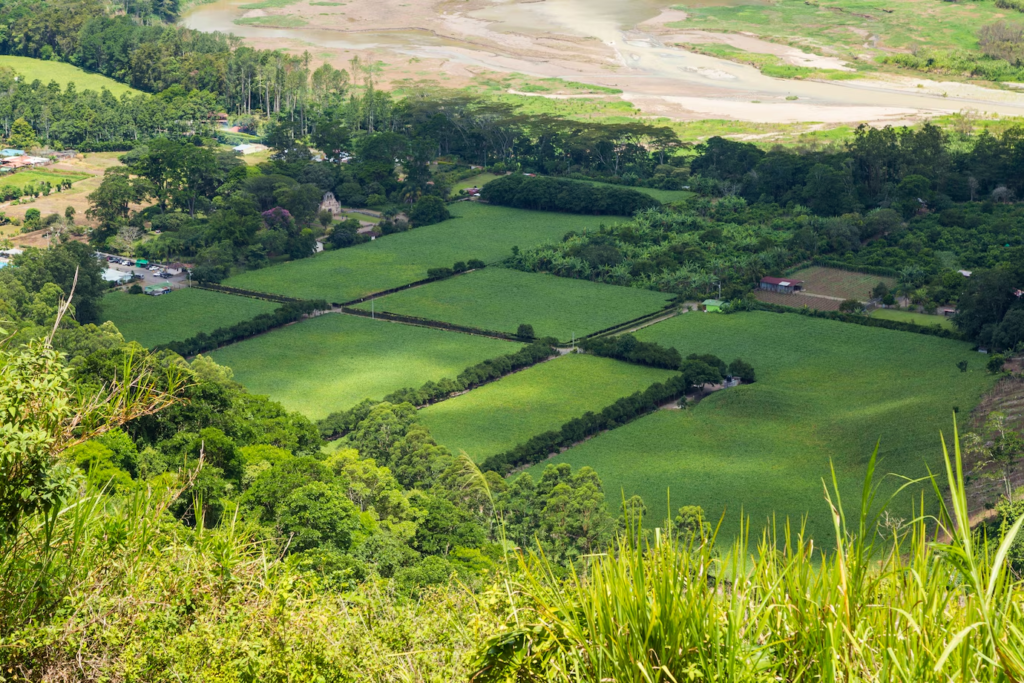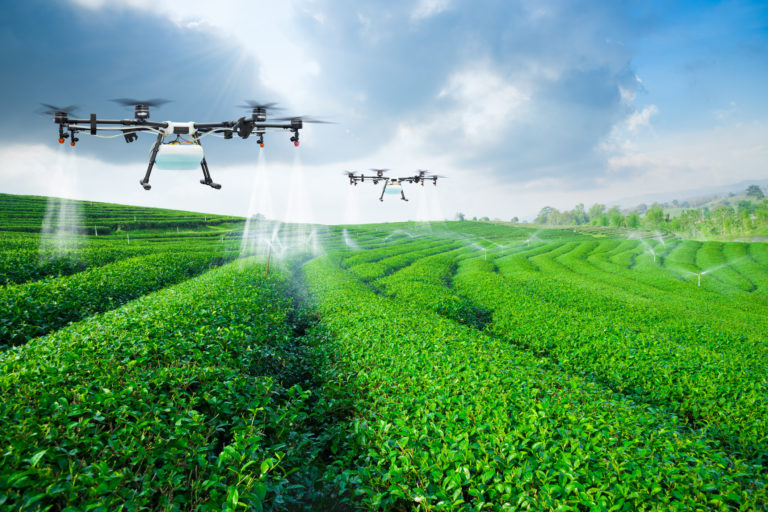Precision agriculture is revolutionizing the way we approach farming, combining cutting-edge technology, data analytics, and advanced equipment to optimize crop production. By utilizing tools like GPS, sensors, drones, and automated machinery, precision agriculture allows farmers to manage their land more effectively, increase crop yields, and minimize waste. This article explores how precision agriculture can enhance crop yields and improve farming efficiency, ultimately leading to a more sustainable and profitable agricultural future.
1. Data-Driven Decisions: Enhancing Crop Management
Precision agriculture relies heavily on data collection to make informed decisions about crop management. With the use of sensors, satellite imagery, and drones, farmers can monitor soil health, crop growth, and weather conditions in real time. By analyzing this data, farmers can make precise decisions about irrigation, fertilization, pest control, and harvesting, leading to improved crop yields and reduced resource waste.
Impact:
- Informed Crop Management: Real-time data allows farmers to adjust their practices based on actual conditions rather than relying on general assumptions.
- Reduced Inputs: By applying resources more precisely, farmers use less water, fertilizers, and pesticides, minimizing waste and reducing costs.
2. Improved Irrigation Systems: Water Conservation

One of the most important aspects of precision agriculture is the ability to optimize irrigation. Traditional irrigation systems often apply water uniformly across entire fields, leading to overwatering or underwatering in some areas. Precision agriculture uses soil moisture sensors and satellite data to monitor water usage and ensure that each plant receives the right amount of water.
Impact:
- Water Efficiency: Precision irrigation systems conserve water by applying it only where and when it’s needed.
- Reduced Water Waste: Efficient water management improves crop health while reducing water consumption, a critical issue in water-scarce regions.
3. Optimized Fertilizer Use: Reducing Waste and Costs
Precision agriculture helps optimize the use of fertilizers, ensuring they are applied in the right amounts at the right time. By using data on soil nutrients and crop needs, farmers can create customized fertilizer plans for different areas of a field. This tailored approach reduces fertilizer waste, lowers costs, and minimizes environmental pollution caused by excess fertilizer runoff.
Impact:
- Targeted Fertilization: Fertilizer is applied only where needed, improving crop growth and preventing nutrient leaching into water systems.
- Cost Savings: Precision fertilizer application reduces the amount of chemicals needed, lowering costs for farmers.
4. Pest and Disease Management: Early Detection and Targeted Solutions
Precision agriculture tools such as drones, sensors, and AI-powered systems help identify pest infestations and disease outbreaks early. By monitoring fields in real time, farmers can detect problems before they become widespread. This allows for the targeted application of pesticides or other treatments, reducing the use of chemicals and ensuring that pests are controlled efficiently.
Impact:
- Early Problem Detection: Precision tools allow farmers to spot issues early, preventing major crop damage and reducing the need for widespread pesticide application.
- Reduced Chemical Use: Targeted pest management minimizes the environmental impact of pesticide use, promoting healthier ecosystems.
5. Crop Health Monitoring: Maximizing Yield Potential
Through the use of aerial imaging, drones, and sensors, precision agriculture provides a detailed view of crop health across entire fields. This allows farmers to monitor crop stress, nutrient deficiencies, and overall plant growth. By identifying and addressing these issues quickly, farmers can optimize conditions for maximum crop yields.
Impact:
- Increased Yield Potential: Early identification of crop issues allows for timely interventions, helping crops reach their full potential.
- Higher Quality Crops: Monitoring crop health ensures that plants grow under optimal conditions, leading to healthier, more productive crops.
6. Precision Planting: Efficient Seed Placement
Precision agriculture involves using GPS-guided equipment to plant seeds with greater accuracy, ensuring that they are placed at the ideal depth and spacing. This leads to more uniform crop growth, reduces seed waste, and improves the overall efficiency of the planting process. By planting seeds more efficiently, farmers can maximize their field’s productivity.
Impact:
- Improved Seed Placement: Accurate planting optimizes plant growth, leading to higher yields and better resource utilization.
- Reduced Seed Waste: Precision planting minimizes seed waste, reducing input costs and increasing farm efficiency.
7. Yield Mapping: Identifying Areas for Improvement
Yield mapping is a crucial component of precision agriculture that uses GPS technology to track crop yields across a field. By analyzing the data, farmers can identify areas of the field with low productivity and take corrective actions, such as adjusting irrigation, fertilization, or pest management practices in those areas.
Impact:
- Targeted Improvements: Yield mapping allows farmers to focus their efforts on areas with lower yields, improving overall farm productivity.
- Better Resource Allocation: Farmers can allocate resources more effectively, improving efficiency and profitability.
8. Automation and Robotics: Streamlining Farming Tasks
Automation and robotics play a significant role in precision agriculture by reducing the need for manual labor and increasing operational efficiency. Robotic systems can handle tasks such as planting, weeding, and harvesting, while automated machinery can perform tasks like tilling, spraying, and irrigation. This not only saves time but also enhances precision in farm operations.
Impact:
- Labor Efficiency: Automation reduces the need for human labor, lowering operational costs and increasing efficiency.
- Increased Precision: Robotic systems can perform tasks with high precision, reducing errors and optimizing outcomes.
9. Climate Adaptation: Preparing for Changing Weather Patterns
Precision agriculture allows farmers to better adapt to changing weather patterns and extreme events, such as droughts, floods, and storms. By using real-time weather data and climate models, farmers can adjust their practices to mitigate the effects of climate change. For example, they can optimize irrigation schedules during dry spells or prepare for heavy rainfall by managing water runoff more effectively.
Impact:
- Resilience to Climate Change: Precision tools help farmers adjust to unpredictable weather patterns, ensuring consistent crop production.
- Increased Adaptability: Precision agriculture enables farmers to make timely decisions based on weather forecasts, minimizing climate-related risks.
10. Sustainable Farming Practices: Reducing Environmental Impact
Precision agriculture promotes sustainable farming by reducing the need for excess chemicals, water, and energy. By optimizing resource use, farmers can minimize environmental damage, preserve natural resources, and reduce their carbon footprint. Additionally, precision practices help maintain healthy ecosystems and biodiversity.
Impact:
- Environmental Sustainability: Precision agriculture reduces the environmental impact of farming by minimizing waste and resource consumption.
- Long-Term Farm Viability: Sustainable farming practices ensure the long-term health of soil, water, and ecosystems, contributing to future food security.
Also Read: How Can Agroforestry Help In Combating Climate Change?
Conclusion
Precision agriculture is transforming the way we approach farming, offering innovative solutions to improve crop yields, reduce costs, and enhance overall farm efficiency. By leveraging technology and data analytics, precision agriculture enables farmers to make more informed decisions, optimize resource use, and minimize environmental impacts. As the agricultural industry faces growing challenges related to climate change and population growth, precision farming represents a crucial strategy for ensuring sustainable food production and securing the future of global agriculture.
